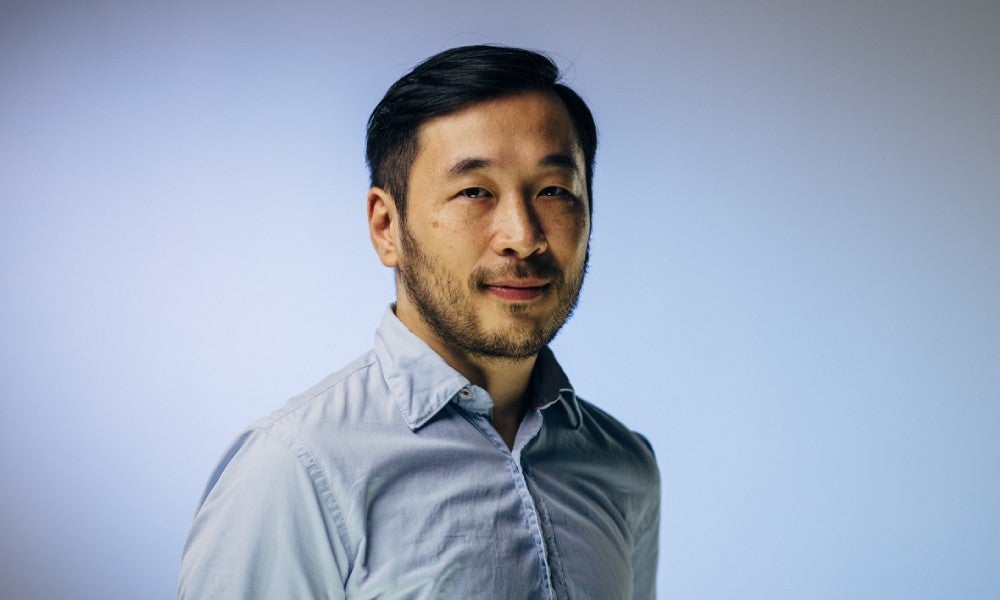In the co-pilot's seat: how AI is transforming healthcare
Download The Business Of podcast on your favourite podcast platform.
The broader adoption of artificial intelligence (AI) as a 'co-pilot' for healthcare professionals will require humility, leadership and strong change management
Imagine starting each day with an inbox of 500 new emails – that is what it is like for many radiologists, who start every day by reviewing 500 new scans, each requiring full attention and action. So, it is no surprise that healthcare workers today are feeling burned out and overwhelmed by the increasing demands of their profession. In the NSW workers' insurance scheme, healthcare workers take the lead in mental stress-related claims.
However, the emergence of innovative technologies, such as AI, is helping to address this issue. These technologies are being designed to assist with various healthcare tasks, including the diagnosis and treatment of illness, assisting with surgical planning and the automation of administration and other repetitive tasks. By acting as a work co-pilot for healthcare professionals, the adoption of AI means they can focus on delivering better care to their patients.
In a recent episode of the AGSM Business of Leadership podcast, Dr Lamont Tang, Director of Industry Projects at AGSM @ UNSW Business School, Dimitry Tran, AGSM MBA alumni and Co-founder and Board Director of Harrison.ai, a ground-breaking healthcare technology company that combines human intelligence with artificial intelligence, was joined by UNSW Business School’s Professor of Practice Maureen Murphy, Commercialisation Facilitator, to explore some of the opportunities and challenges associated with the adoption of AI in healthcare.

How is AI being used in healthcare?
Both guests, who are UNSW and AGSM MBA alumni and experts in their respective fields, discussed how AI assists healthcare professionals in various ways. For example, Mr Tran discussed the mission behind Harrison.ai, which is to scale the capacity of healthcare globally through AI technology. As the co-founder of Harrison.ai, Mr Tran explained how they provide a “co-pilot to clinicians” that can help doctors and other specialists make more accurate and timely diagnoses.
“We're living in a world post-COVID, where the pressure in the healthcare system is immense, and we believe that the introduction of technologies like AI can help address one of our society's fundamental problems today,” explained Mr Tran.
So how does AI function as a “co-pilot” to clinicians? He explained: “When a radiologist looks at a chest x-ray, for example, there would be many things that take a long time to train for a physician to be able to pick up. It took up to 16 years to train a radiologist. So, what we do is we provide a co-pilot that can detect findings alongside the doctors. For example, the sign of pneumonia on a chest x-ray, or sign-up stroke on a CT brain, and that will help the clinician make a more accurate diagnosis in a timelier manner,” he explained.
And given Australia’s ageing population and the increasing demand for adequate healthcare, Mr Tran said speeding up efficiencies in diagnoses will become increasingly crucial for the health and safety of society both now and in the future.

Augmenting workflows to deliver better patient care
Professor Murphy, an expert in startups and government investment of capital into the innovation ecosystem, said she believes AI is all about data and using that data to make predictions and then scaling the technology beyond pilot stages.
Professor Murphy has a deep understanding of the intersection of technology and business and has served as CEO of several companies from startup to exit, and now leads the efforts to commercialise new technologies at i4 Connect, a startup and commercialisation firm that provides advice and guidance to entrepreneurs via the Australian Government’s Entrepreneurs’ Programme.
“Organisations will get to the pilot stage, and they'll get a nice little AI experience, but they have difficulty scaling it from pilot to an enterprise-level AI improvement,” said Professor Murphy, who gave the example of Vantari – an Australian company that uses AI to assist clinicians in healthcare. Specifically, Vantari uses AI combined with virtual reality to enable surgeons to pre-plan surgeries before making the first incision, thereby reducing the risks of surgery and improving patient outcomes.
“They are using AI combined with virtual reality, in a way that enables the surgeons to take the MRI images, turn those into a virtual reality environment so surgeons can go in, and actually see what they're going to be doing when they make that first incision,” said Professor Murphy.
Read more: AI in the workplace: what should CEOs really be thinking about?
“So, they can see what's happening in the aorta, or they can see what's happening in the blood vessels. Obviously, if they're able to pre-plan the surgery, the outcomes for patients are going to be so much better, and the risks of surgery will be reduced, and that's great for healthcare.”
By making things easier and faster for clinicians (and for workers in other industries), she said AI is already augmenting the human capabilities of professionals for the better.
Mr Tran said adopting AI in healthcare is about revolutionising a clinician's workflow. He explained: “We're bringing a lot more data; we're bringing a co-pilot, AI, to the workflow. It's quite disruptive, and I think we need to recognise this. This is not sustaining innovation. This is not something that you incrementally change. This is something that you introduce into a workflow that is already overtaxed with all the pressure on the healthcare system that's going through right now,” he said.
“I think there's a humility that needs to come through from anyone who tried to innovate in this space, that thing will take time, and big investment needs to come into change management,” he explained.

How to remove barriers to adoption
Apart from the challenge of scaling AI technology, there are other significant barriers to adoption. Professor Murphy explained: “We know that AI is going to change the way we do everything, not just in healthcare, but in almost every industry, but the challenges are often that there's no stakeholder buy-in.
“Sometimes the innovation comes, and quite often I see this in startup companies particularly, the innovation comes from the technologists, but it needs to be led by the senior managers in organisations.”
A strong level of executive support is crucial to success for any AI initiative, and it is important that executive support comes from heads of functional operations including the CIO and the head of HR, she said.
“In a hospital situation, the clinicians, the key opinion leaders, the administrative people, all have to buy into it, and that level of communication that has to occur needs to be organisation-wide,” Professor Murphy added. “By showing the users that there is value in what's being delivered, and that their jobs will be made easier because they're going to have their activities augmented, that will help overcome employee resistance, but it takes time, and it takes strong leadership.”
Read more: How ethical leadership creates responsible AI
What do business leaders need to know?
According to Professor Murphy, leaders in healthcare organisations and other industries that are exploring AI do not necessarily need to understand how AI works but must understand its capabilities and power to add value. What is important is fostering a culture that embraces change, and a need for visionary leaders who can create disruptive change while focusing on running business operations.
“I think we need to look at the cultures that embrace change, and that might require a different type of leader; leaders who are more visionary and reinventors, and they do have to have a particular skill. They need to be able to keep business as usual going, but they also need to create quite disruptive change while that's happening,” Professor Murphy said.
“It's like they have to be able to keep flying the plane while also putting a new engine in, and it's not necessarily an easy thing... change management capabilities need to be very strong, and bottom-line communication, good communication, and great data.”
Subscribe to BusinessThink for the latest research, analysis and insights from UNSW Business School
But the first hurdle to clear is a regulatory one, followed by how to monitor AI’s success Mr Tran added. “I think this is one of the things that we are still coming to grips with globally in the healthcare industry, which is how to monitor AI performance in real-time.
“This is not a one-off check: you're safe, and from this point on, you can sell to whoever and wherever you want,” he said. “The AI technology needs to be monitored in real-time and get the feedback from the user.”
